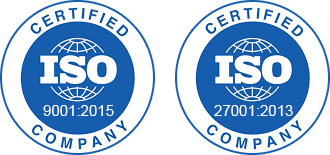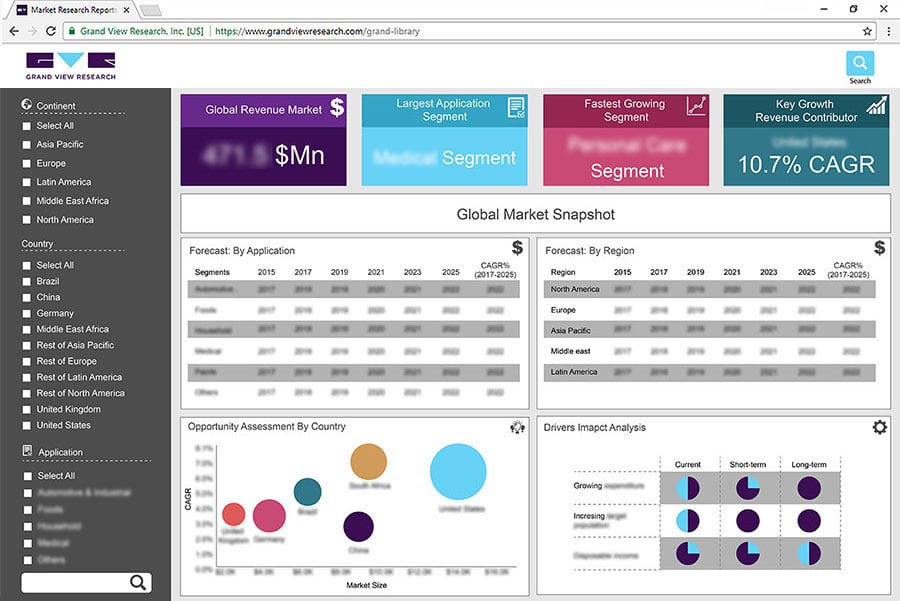- Home
- »
- Plastics, Polymers & Resins
- »
-
Biopolymer Packaging Market Size, Industry Analysis Report, 2027GVR Report cover
![Biopolymer Packaging Market Size, Share & Trends Report]()
Biopolymer Packaging Market Size, Share & Trends Analysis Report By Material, By End Use, Regional Outlook, Competitive Strategies, And Segment Forecasts, 2019 To 2027
- Report ID: GVR7059
- Number of Report Pages: 0
- Format: PDF, Horizon Databook
- Historical Data: ---
- Forecast Period: 1 - 2025
- Industry: Bulk Chemicals
The global biopolymer packaging market has been witnessing exponential demand from the end-use industries in recent years. Growing environmental concerns due to the extensive use of synthetic polymers, coupled with rising stringent regulations on the plastic packaging, are considered to be key to the factors attributing the growth to the global biopolymer packaging market. However, high raw material cost and performance issues of biopolymer-based packaging are acting as a barrier to market growth.
Biopolymers are polymers that occur in nature. Cellulose, starch, collagen, proteins, lipids, and others are a few widely used biopolymers. These are extracted from the plant and living organism, hence are sustainable in nature. Biopolymers are often blended with other conventional polymer or with biopolymers to enhance their mechanical properties and as per the need of end-use applications.
Traditional synthetic polymers are majorly non-degradable; every year, around eight million tons of plastic dumped in the ocean, which considerably affect the marine life. To curb this plastic pollution, as of 2018, over 13 countries, including France, Bangladesh, Taiwan, New Zealand, and others, have banned single-use plastic. Furthermore, few countries are imposing additional taxes on the usage of single-use plastic.
In addition, sustainability awareness among the consumer has increased significantly, which is further forcing the manufacturer to opt for eco-friendly packaging. Growing stringent regulation on the use of plastic bags have also forced retailers and wholesalers to opt environment-friendly packaging. This growing demand for sustainable or green packaging is expected to principally drive the demand for biopolymer packaging in the coming years.
Advancement in technology has also been expanding the application scope of biopolymer packaging. For instance, the development of edible packaging wherein the packaging can be eaten along with the packed product, is made by using biopolymers such as proteins, polysaccharides, and lipids. Increasing demand for edible packaging on account of its sustainability from the food & beverage and pharmaceutical industry is expected to fuel the demand for biopolymer packaging in the near future.
End-use companies are increasingly opting for biopolymer packaging in order to achieve sustainability. For instance, in January 2019, Samsung, under its sustainability policy, announced its plan to replace plastic packaging with paper and biopolymer-based packaging. Under this, plastic packaging, which was used for the packaging of home appliances such as TVs, refrigerators, air conditioners, and washing machines, to be replaced by bioplastic, which is derived from starch and sugarcane. Other companies are also expected to follow a similar approach to reduce plastic packaging, which in turn, expected to benefit the biopolymer packaging market in the coming years.
Continuous development and introduction of novel biopolymer across the world has also been contributing to the growth of the market. Polyhydroxyalkanoates (PHA) biopolymer are produced by using various microorganism; it offers high robust melting point. PEF biopolymer, which offers similar properties as that of PET, is likely to enter the market by 2020. Furthermore, increasing the extraction of biopolymer from various sources, including chitosan, milk protein, pine needles, and seaweed, has been expanding biopolymer material category, which is likely to impact positively on the growth of the market.
The global biopolymer packaging market is segmented on the basis of material, end-use, and region. The material segment is further divided into non-biodegradable and biodegradable. Among these, the biodegradable material segment, which includes PLA, PBT, starch blends, and others, is expected to register the highest CAGR over the forecast period. Increasing demand for biodegradable packaging primarily contributes to the growth of the biodegradable material segment.
Based on end-use, the market is divided into food & beverage, healthcare, retail, automotive, and others. The food & beverage segment held the largest share in the end-use segment in 2018. Increasing adopting of sustainable packaging by the food & beverage industry contributed to the largest share of the segment in 2018. Moreover, increasing the adoption of sustainable packaging by the pharmaceutical industry is expected to expand the healthcare end-use segment in the coming years.
On a regional basis, Europe held the largest share in the market on account of the presence of a large number of bioplastic packaging companies. In addition, high awareness among people in the region, coupled with sturdy purchasing power, has also contributed to the expansion of the market in Europe. Furthermore, in March 2019, the European Union had approved the law to ban single-use plastic by 2021; this development is anticipated to fuel the demand for the biopolymer packaging market in the coming years.
Asia Pacific region is also expected to attain a significant CAGR during the forecast period. Increasing awareness among the consumers, coupled with a growing ban on single-use plastic, particularly in countries such as Taiwan, Malaysia, India, and others, is attributing to the growth of the market in the region. In addition, China has undertaken the environmental reform movement under which the country halted the import of plastic waste for recycling and focusing on sustainable development. Developments such as this are expected to fuel the growth of the regional biopolymer packaging market over the forecast period.
The key players operating in the global biopolymer packaging market are The Dow Chemical Company, Novamont S.p.A, Innovia Films, Ltd, NatureWorks, LLC, Braskem S.A, Ltd., and others. The market is in the growth phase; therefore, new companies are expected to enter the market. Existing players are extensively investing in R&D to develop new material and packaging types to expand end-use applications.
Share this report with your colleague or friend.
![gvr icn]()
NEED A CUSTOM REPORT?
We can customize every report - free of charge - including purchasing stand-alone sections or country-level reports, as well as offer affordable discounts for start-ups & universities. Contact us now
![Certified Icon]()
We are GDPR and CCPA compliant! Your transaction & personal information is safe and secure. For more details, please read our privacy policy.
We are committed towards customer satisfaction, and quality service.
"The quality of research they have done for us has been excellent."





